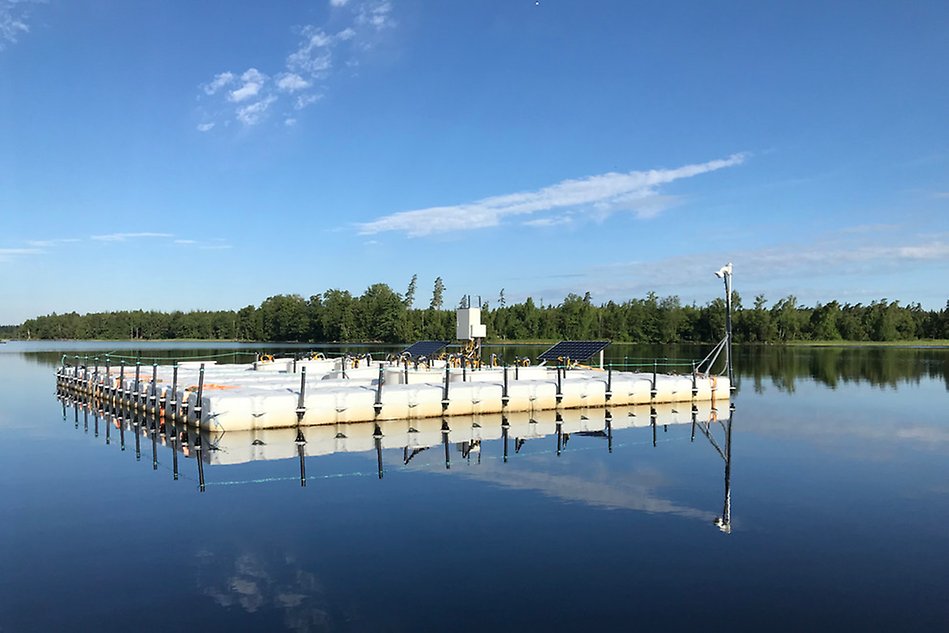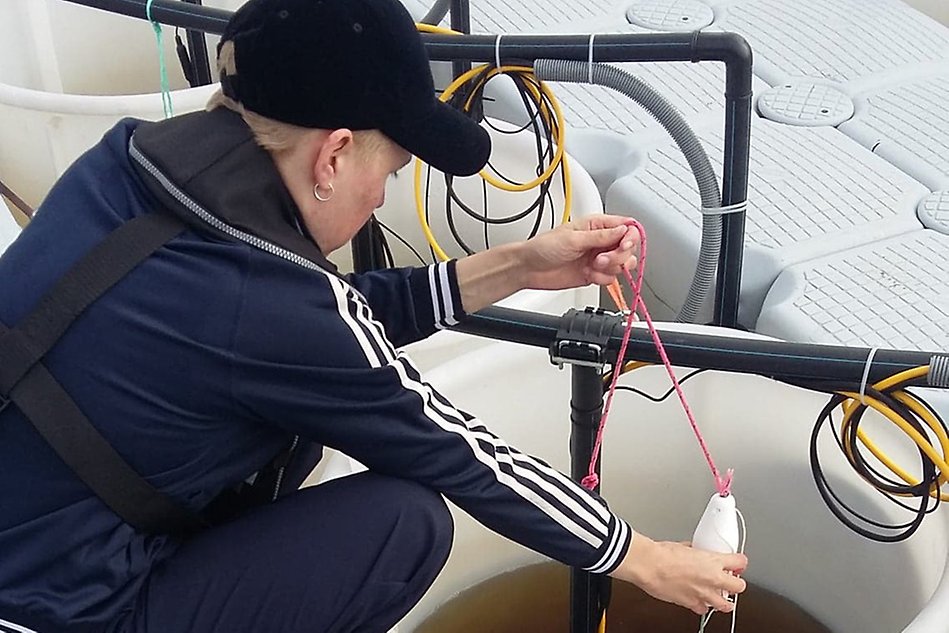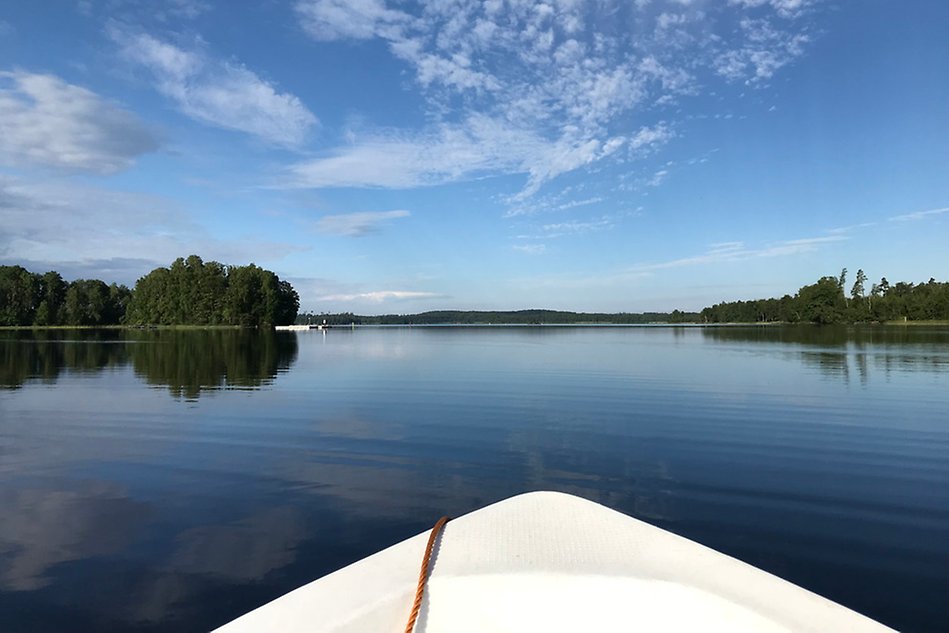Testing the effects of browning on the pelagic lake food web of Lake Bolmen - A 6-week mesocosm experiment
With increasing temperatures in boreal regions, lakes, rivers and oceans are receiving more input of terrestrial humic substances. This lake browning has consequences for the aquatic food web in terms of species composition and energy transfer efficiency. In addition, browning creates problems for lakes that serve as drinking water reservoirs, due to increased purification costs.

Lake Bolmen is Sweden’s 7th largest lake and serves as a drinking water reservoir for a large part of southern Sweden. Lake monitoring data show a clear pattern of increasing browning in this lake over the preceding decades. In order to understand the consequences of increased browning on the Lake Bolmen food web – in particular on bacteria, phytoplankton and zooplankton species community composition and abundance – we conducted a 6 week mesocosm experiment during summer 2018, where colour was manipulated.

So far, measures of different algal pigment concentrations show that browning has strong effects on algal pigment composition and thus probably on algal taxonomic composition. Our results suggest that increasing browning affects basic producer composition in lakes, thus possibly even changing composition and biomass of higher trophic levels of the aquatic food web in boreal regions.

About the project
Collaborators:
- Linda Parkefelt (Sweden Water Research and Southern Sweden Water Supply, Research station Bolmen; Lund University, Aquatic Ecology)
- Juha Rankinen (Southern Sweden Water Supply, Research station Bolmen)
- Lars Gunnar Franzen (Halmstad University)
- Antonia Liess (Halmstad University)
Field assistants:
- Tatyana Barnes
- Oswald Ndlovu
- Jens Lannér (Southern Sweden Water Supply, Research station Bolmen)
Students conducting thesis work within the project:
- Victoria Jansson (Effects of browning on cyanobacterial toxins)
- Fankai Wei (abiotic changes in the water due to browning)
- Oscar Gustavsson (zooplankton community composition)

